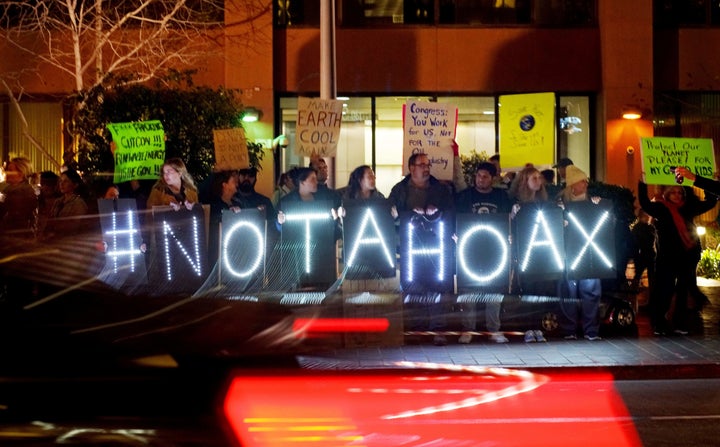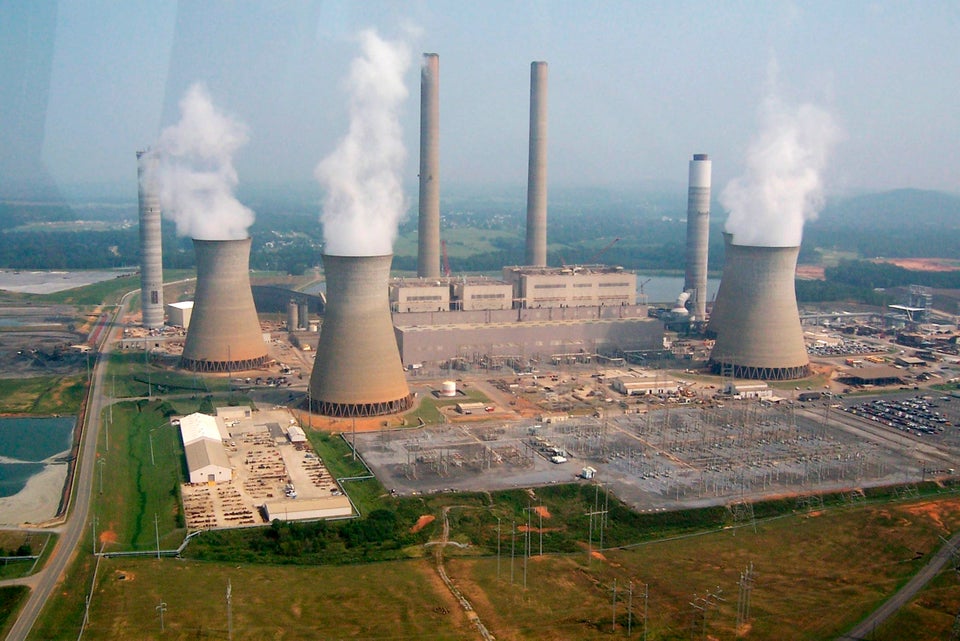
Environmental Protection Agency chief Scott Pruitt may not believe that carbon dioxide is to blame for global warming, but most scientists say the evidence is clear. And now new data shows the amount of CO2 in the atmosphere has increased at a record pace for the second year in a row.
“As we twiddle our thumbs, CO2 just keeps going up and up,” Ralph Keeling, director of the Scripps Institute for Oceanography’s carbon dioxide monitoring program, told Scientific American Tuesday. Climate scientists have long agreed that the carbon dioxide that humans pump into the atmosphere is the primary driver of climate change, he added.
Atmospheric CO2 levels measured at the Mauna Loa Baseline Atmospheric Observatory in Hawaii, the world’s marquee site for carbon dioxide monitoring, soared by a record-breaking 3 parts per million in both 2015 and 2016, according to data that the National Oceanic and Atmospheric Administration released on Friday.
Carbon dioxide concentrations measured at the facility hit 405.1 parts per million last year, the agency said, adding that similar observations had been recorded at dozens of other sites all over the world.
Pieter Tans, lead scientist at NOAA’s Global Greenhouse Gas Reference Network, said that carbon dioxide concentrations in the atmosphere have increased at least 2 parts per million for the five consecutive years ― an “unprecedented” growth rate.
“The rate of CO growth over the last decade is 100 to 200 times faster than what the Earth experienced during the transition from the last ice age,” Tans said in a statement. “This is a real shock to the atmosphere.”
In 2013, Mauna Loa Observatory scientists announced that atmospheric levels of carbon dioxide had reached a daily average above 400 parts per million for the first time in history. CO2 concentrations “haven’t been this high in millions of years,” said scientist Erika Podest at the time. “This milestone is a wake-up call.”
Two years later, the world reached another grim benchmark. NOAA said the monthly global average concentration of CO2 had surpassed 400 parts per million for the first time. A year after that, scientists said global CO2 levels would likely not fall below 400 parts per million — perhaps ever again.
“I think we’re essentially over for good,” Keeling said in May 2016.

In the 10,000 years or so before the Industrial Revolution, atmospheric carbon dioxide levels had averaged about 280 parts per million. Since then, however, the concentration of CO2 has skyrocketed, ballooning from about 300 parts per million in 1960 to the current astronomical level.
And the upward trend is showing no signs of slowing. Scientists say 410 parts per million could be reached later this month, a concentration never before witnessed in human history.
“The momentum we’re seeing right now, going upwards, I think is going to easily carry us through 450 parts per million,” Keeling told the The Huffington Post in an earlier interview. “And then I would say even stabilizing before 500 parts per million is probably not going to be very easy.”
Since carbon dioxide stays in the atmosphere for hundreds, even thousands of years, even a fairly stable rate of carbon emissions ― which is what we’ve seen over the past three years ― would still result in an ever-burgeoning concentration of it in the atmosphere.
In fact, even if emissions somehow plummeted to zero tomorrow, it would still take many years for the amount of CO2 in the atmosphere to start tapering.
“At best [in that scenario], one might expect a balance in the near term and so CO2 levels probably wouldn’t change much — but would start to fall off in a decade or so,” Gavin Schmidt, NASA’s chief climate scientist, told Climate Central last year.
And this is the best-case scenario. Though carbon emissions have been relatively flat in recent years, people are still spewing enormous amounts of it into the atmosphere every year. In 2014, an estimated 35.7 billion tons carbon dioxide was released by the burning of fossil fuels alone.

Since the Industrial Revolution, carbon dioxide already released into the atmosphere has caused an average global temperature increase of about 1.8 degrees Fahrenheit ― a shift that’s led to record temperatures, melting ice sheets, extreme weather events and other significant impacts.
At current rates of warming, scientists have predicted that global temperatures could rise by up to 10 degrees Fahrenheit (or 6 degrees Celsius) over the next century. By signing last year’s landmark Paris Agreement, however, more than 190 countries vowed to cut their carbon output so as to keep global warming “to well below” 3.6 degrees Fahrenheit (2 degrees Celsius).
But President Donald Trump and his administration have shown reluctance ― and even hostility ― toward the global consensus. Trump has called climate change a “hoax” and “bullshit,” and said he wants to pull the U.S. out of the global climate agreement. He’s also expected to soon sign an executive order, seeking to repeal the historic Clean Power Plan regulation that former President Barack Obama’s administration issued, which restricts greenhouse gas emissions from power plants.
Last week, Pruitt prompted a furore in the scientific community and among many in the American public when he claimed that carbon dioxide released by humans is not definitively the primary contributor to climate change.
“I think that measuring with precision human activity on the climate is something very challenging to do and there’s tremendous disagreement about the degree of impact, so no, I would not agree that it’s a primary contributor to the global warming that we see,” the EPA chief told CNBC. “We need to continue the debate and continue the review and the analysis.”
The phones in Pruitt’s office were reportedly “ringing off the hook” following these comments, as hundreds of people called in to express their outrage.
Pruitt, whose close ties to the fossil fuel industry are well-documented, was also the target of a letter that a group of 30 climate scientists wrote this week that lambasted his comments.
“Just as there is no escaping gravity when one steps off a cliff, there is no escaping the warming that follows when we add extra carbon dioxide and other greenhouse gases to the atmosphere,” said the letter, signed by researchers from Harvard University, Stanford University, Princeton University, and the Massachusetts Institute of Technology, among others.
“[If] we continue to increase the atmospheric levels of greenhouse gases, the Earth will continue to heat up, with serious consequences for economies and ecosystems across the globe,” the scientists added.

